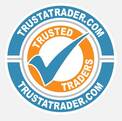You can always tell it’s nearly Christmas when it becomes frosty and your car is iced over in the morning. Just like your vehicle there is a chance that there is ice on the roads too, so you should drive cautiously, particularly if the weather is poor and your visibility is reduced. Always clear your windscreen and windows fully before setting off.
Make sure you are prepared for breaking down - have a mobile with sufficient battery life and contact numbers in case of a breakdown, some snacks, a hot drink and a blanket.
DON’T DRINK AND DRIVE! Around the festive season drink driving increases to the highest degree. Don’t earn yourself up to a £5000 fine, a minimum driving ban of 12 months and a criminal record - it’s just not worth it! The electronic road signs are brilliant for displaying safety messages and advising us ‘DON’T DRINK AND DRIVE’ and this reminder is particularly used in the winter months, as people drink tremendous amounts of alcohol in this holiday period, whether it be at the Christmas work party or just a night out with friends, after all ‘tis the season to be jolly.
The official legal limit for drivers in GB is: 35 micrograms of alcohol per 100 millilitres of breath, 80 milligrams of alcohol in 100 millilitres of blood and 107 micrograms of alcohol per 100 millilitres of urine. However, any amount of alcohol will affect your driving whether you are over the limit or not, so it is advisable that if you are driving not to consume any alcohol at all, after all you don’t want to run the risk of putting yourself or others in danger.
There is no definitive way to stay below the limit as alcohol affects us all differently depending on your weight, age, gender, metabolism speed, stress level, recent food consumption and the type of alcohol you’re drinking. And even if you are below the limit your reaction time would have still been reduced, thus disorientating your judgement. Don’t run the risk. Organise a designated driver, arrange a lift, find a local taxi number or find out what local public transport you can take before you go out and if you do arrange a designated driver don’t offer or tempt them to drink.
Even if you’re not driving, ensure that the person that is driving hasn't been drinking either. You should also be careful when driving the day after a night out, since if you have consumed excessive amounts of alcohol there’s a good chance you’ll still be over the limit the next day, this is because alcohol takes time to work through your system, and no amount of coffee or food will sober you up. If you are ever in doubt, don’t drive.
DON’T DRIVE TIRED! Throughout the Christmas period many of us drive for a long period of time to visit family or go away on holiday. You should never start any trip, especially a long one, if you’re already tired. You should always plan your journey to include at least a 15 minute break approx every 2 hours and just remember that if you are getting up earlier than you typically do you may become fatigued before you would usually. If you do start to feel tired, find the nearest safe place to stop and have a rest, drink a high-caffeine drink and allow at least 10 minutes for the caffeine to kick in before setting off again. However, you shouldn't use caffeine as a substitute for sleep, only sleep will really cure tiredness – a caffeine drink or a nap is only a short term solution.
TIP – If the journey is excessively long, consider having more than one driver and take it in shifts to drive.


 RSS Feed
RSS Feed

